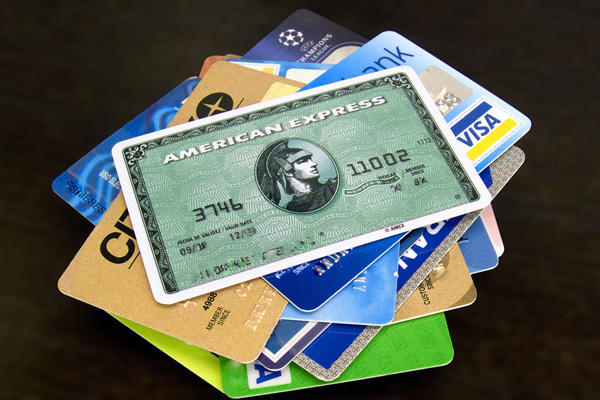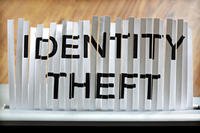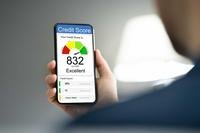When your monthly statement comes, there’s a great temptation to pay only the minimum. Don’t do it.
Read your statement carefully for information about how long it would take to pay off your account balance if you only pay the minimum payment. It can take years, even decades, to pay it off.
If possible, always pay the balance in full every month or pay more than the minimum amount. Doing so will help you to establish an excellent credit rating, a score used by lenders to determine the rate you will pay on your loan.
Real World Examples
Suppose when you’re 18, you charge $1,500 worth of clothes and DVDs on a credit card with a 19 percent interest rate.
If you repay only the minimum amount each month, and your minimum is 4% of the outstanding balance (the lowest amount permitted by some issuers), you’ll start with a $60 payment. You’ll be more than 26 years old by the time you pay off the debt. That’s 106 payments, and you will have paid more than $889 extra in interest. And that’s if you charge nothing else on the card, and no other fees are imposed (for example, late charges).
If your minimum payment is based on 2.5% of the outstanding balance, you’ll start with a $37.50 payment. You’ll be over 35 years old when you pay off the debt. That’s 208 payments, and you will have paid more than $2,138 in interest, even if you charge nothing else on the account and have no other fees.
Wondering how long it will take to pay off your debt? Based on the information you supply, this credit card repayment calculator estimates of how long it will take you to pay off your credit card balance.
Keep Credit Card Use Under Control
Whether you shop online, by telephone, or by mail, a credit card can make buying things much easier. But when you use a credit card, it’s important to keep track of your spending. Incidental and impulse purchases add up. When the bill comes, you have to pay what you owe. Owing more than you can afford to repay can damage your credit rating.
Keeping good records can prevent a lot of headaches, especially if there are inaccuracies on your monthly statement. If you notice a problem, report it immediately to the company that issued the card. Usually the instructions for disputing a charge are on your monthly statement. If you use your credit card to order online, by telephone, or by mail, keep copies and printouts with details about the transaction.
These details should include the company’s name, address, and telephone number; the date of your order; a copy of the order form you sent to the company or a list of the stock codes of the items you ordered; the order confirmation code; the ad or catalog from which you ordered (if applicable); any applicable warranties; and the return and refund policies.
Security Tips and More Information
If you use a credit card, charge card, or debit card, take the following precautions:
- Never lend it to anyone.
- Never sign a blank charge slip. Draw lines through blank spaces on charge slips above the total so the amount can’t be changed.
- Never put your account number on the outside of an envelope or on a postcard.
- Always be cautious about disclosing your account number on the telephone unless you know the person you’re dealing with represents a reputable company.
- Carry only the cards you expect to use to minimize the damage of a potential loss or theft.
- Always report lost or stolen credit cards, charge cards, and debit cards to the card issuers as soon as possible. Follow up with a letter that includes your account number, when you noticed the card was missing, and when you first reported the loss.
For more information, visit the Federal Reserve’s Consumer Guide to Credit Cards
Follow these guidelines to avoid credit card debt and create good credit at the same time.
- Know your financial means and limits, and don't go beyond them. Only charge items that you know you can pay off each month.
- If you already carry a balance, pay more than the minimum payment (or the most you can afford) to bring down your principal balance. Try to keep your balance as low as possible.
- Shop around before accepting a credit card offer.
- Compare APRs. They range from 7.99% to 30.25%.
- Carry only 1 or 2 major credit cards and avoid using your full credit limit.
- Read the fine print and disclosures.
- If you are making payments on several credit cards, try to consolidate them into a single card with a low APR. Alternatively, you should pay off the card with the highest interest rate first.
Here are some other credit card problems to avoid:
- Balance transfer fees
A 3% charge is not uncommon for transferring the balance on your old credit card to a new one, usually to get a lower interest rate. For every $1,000, it would cost you $30. Transfer $10,000 and you could pay $300. Look for a cap. Even with a cap, you might pay $75 or more. Decide if it's worth it to transfer your funds and pay a fee in order to get a lower rate. If you don't, you might lose money. - Late payment fees
Late payment fees could run as high as $39. Some cards have a sliding scale, and for any balance over $1,000, you're charged the highest fee. - Annual fees
These fees can be as high as $500, often for a rewards program. But many cards promote "No annual fee" to distract you from their other fees. Choose a card with a fee structure that is right for your circumstances. - Transaction fees
These fees can be up to 5% for cash advances. Want a quick $100 from an ATM? Watch out for a $10 minimum charge. Read the agreement. And remember, cash advances usually come at a higher interest rate. - Over-the-credit limit fee
These can be up to $39. Again, there's often a sliding scale. - Travel penalty
If you charge purchases outside the United States, your credit card company may add a 1% currency exchange fee. Some credit unions and banks tack on an additional 2 percent. Know before you go. - Why reading the fine print matters.
Penalty fees alone average $113 per year for every American household, but jumps in the interest rate can cost you thousands of dollars over the years.
-- This article is courtesy of the National Credit Union Administration at mycreditunion.gov.













